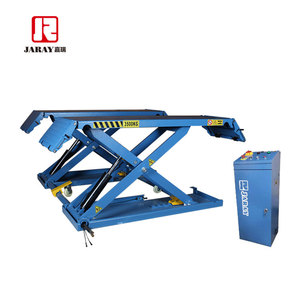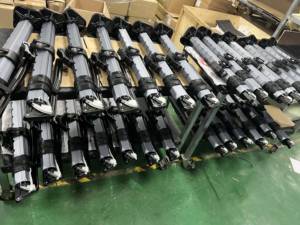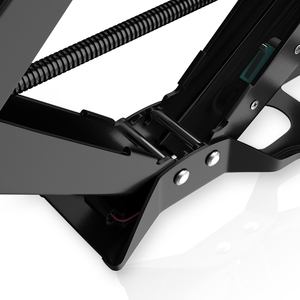(10495 products available)

































































































































































The OEM lifting car jack is a vital tool for vehicle maintenance and repair. It is used to lift vehicles off the ground to allow mechanics to work on the underside of the vehicles. There are different types of car jacks for specific lifting needs. Below are some of the common types of car jacks:
Floor Jack
Floor jacks, also known as trolley jacks, are jacks that are used in garages. They have four wheels that make it easy to move under the vehicle. Floor jacks have a hydraulic system that lifts vehicles with less effort. They also have a wide lifting range and a stable base that prevents accidents when lifting the vehicle.
Bottle Jack
Bottle jacks have a shape that resembles a bottle, hence the name. They are compact and portable mini jacks that are mostly kept in the trunk of a car. Like the floor jack, the bottle jack also uses a hydraulic system to lift heavier vehicles. Their vertical lifting style makes them ideal for lifting vehicles in tight spaces. The major drawback of the bottle jack is that it requires a lot of effort to place it under the vehicle.
Scissor Jack
The scissor jack is a mechanical jack that uses the scissors mechanism. When the arms of the jack move together or apart, the lifting pad either goes up or down. Scissor jacks are mostly supplied with vehicles, especially small cars. They are affordable and lightweight jacks but have a small lifting range. Users must use more effort to raise or lower the vehicle with a scissor jack.
High Lift Jack
High-lift jacks are commonly used in off-road vehicles. They have a large lifting range and can lift a vehicle to a greater height. This jack can lift a car to a height of 5 feet. The high-lift jack is suitable for lifting trucks and 4-wheeled drives in off-road applications. They are also used to change tires in places where the ground is hard or uneven. The main drawbacks of high-lift jacks are the risk of accidents when lifting and the high effort needed to lift the vehicle.
Electric Jack
Electric jacks are the latest jacks in the market. They use electric power to lift or lower a vehicle. Electric jacks are easy to use, and they require less effort to operate. They are suitable for lifting heavy vehicles like trucks and SUVs. Electric jacks have safety features like overload protection that prevent accidents when lifting. The main drawback of electric jacks is the heavy weight and the high cost compared to other jacks.
Here's a general guide on how to maintain and care for an OEM hydraulic car jack:
Regular Inspection:
Regularly inspect the hydraulic jack for any signs of damage or wear. Check the exterior for cracks, dents, or corrosion. Inspect the lifting arm, saddle, and frame for any deformation or misalignment. Also, inspect the hydraulic system for any leaks or fluid loss.
Cleanliness:
Keep the hydraulic jack clean and free from dirt, dust, and debris. Use a clean cloth or brush to remove any accumulated dirt from the surface and moving parts. Regular cleaning prevents abrasive materials from causing wear and tear on the jack components.
Proper Usage:
Use the hydraulic jack according to the manufacturer's instructions. Avoid overloading the jack by exceeding its maximum weight capacity. Lift the vehicle only at the designated lifting points. Improper usage can cause damage to the jack and compromise safety.
Lubrication:
Apply lubricant to the moving parts of the hydraulic jack as recommended by the manufacturer. Use a high-quality lubricant suitable for the specific components. Lubrication reduces friction, prevents wear, and ensures smooth operation of the jack.
Hydraulic Fluid Maintenance:
Check the hydraulic fluid level regularly. Top up the fluid if necessary, using the type specified by the manufacturer. Follow the recommended schedule for hydraulic fluid replacement. Using the correct type and maintaining proper fluid levels are essential for the jack's performance and longevity.
Storage:
Store the hydraulic jack in a clean, dry, and protected area when not in use. Keep it away from extreme temperatures, moisture, and direct sunlight. Protect the jack from exposure to harmful substances or environmental conditions that may cause deterioration.
Periodic Maintenance:
Follow the manufacturer's recommendations for periodic maintenance tasks. This may include disassembling, cleaning, and inspecting internal components, replacing worn seals or valves, and adjusting any necessary parameters. Regular maintenance ensures optimal performance and extends the lifespan of the hydraulic jack.
Training and Safety:
If multiple users operate the hydraulic jack, provide training on its proper use and safety precautions. Ensure everyone understands the operating instructions, safety measures, and emergency procedures. Promote a culture of safety when using the hydraulic jack.
By following these maintenance tips, the OEM hydraulic car jack can be kept in good condition, ensuring safe and reliable operation for vehicle lifting needs. Always refer to the specific maintenance instructions provided by the jack manufacturer for more detailed and accurate information.
Here is how to choose an OEM lifting car jack:
Understanding Vehicle Requirements
Every vehicle has its own specifications. This includes the weight and type of the car. A sports car is lighter than an SUV or truck. Dealers need to look at the manual provided by the vehicle manufacturer. This will guide them on the lifting capacity and requirements for each car.
Capacity and Weight Rating
Capacity refers to the maximum weight a jack can lift. The weight of the vehicle should be less than the capacity. For example, if a car weighs 1,500 kg, the jack should have a capacity of at least 2,000 kg. This provides a safety buffer.
Construction Material
Jacks made of steel are very strong. They are more suitable for heavier vehicles like trucks and SUVs. However, steel jacks are heavy and not portable. Aluminum jacks are lightweight and portable. They are suitable for smaller cars. The only disadvantage of aluminum jacks is that they are not very strong and can bend if overloaded.
Safety Features
OEM car jacks should have safety features. This includes overload valves and safety stands. The overload valve closes if the load exceeds the jack's limit. It prevents accidents by lowering the pressure on the jack. Safety stands give support to the vehicle once it has been lifted. The stands prevent the car from falling and provide a safe working area.
Portability and Storage
Consider how easy the jack can be moved or stored. Lifting jacks that are lightweight and compact are more portable and easier to store in the trunk of a car.
Stability and Quality Control
Buyers should choose jacks with a wide base. A jack with a stable and wider base will not tip over when lifting a vehicle. Jacks from some manufacturers may have defects or damage. OEM jacks have quality control measures. This ensures that every jack is of the same quality and free from defects.
Even though the jack is a simple tool, replacing or repairing it should be the last thing to do. This is because the chances of making mistakes are high, and the consequences can be fatal. However, if the situation does not allow for anything else, here are some tips:
Q1: Can an OEM lifting car jack be used for trucks?
A1: Typically, an OEM lifting car jack is designed for use on cars. However, if the vehicle manual specifies the jack's capacity and suitability for trucks, it can be used. Always check the specifications before using the jack on a different vehicle type.
Q2: How do I know if an OEM lifting car jack is suitable for my vehicle?
A2: To determine if an OEM lifting car jack is suitable for a specific vehicle, users should check the jack's weight capacity and lifting height. The jack should be able to lift the vehicle's weight and provide enough height to work safely underneath.
Q3: Is it safe to use an OEM lifting car jack on uneven surfaces?
A3: Using an OEM lifting car jack on uneven surfaces is not safe. Uneven surfaces can cause the jack to slip or tip over, leading to accidents or injuries. Always move the vehicle to a flat, stable surface before using the jack.
Q4: Can an OEM lifting car jack be repaired if it becomes damaged?
A4: Some minor damages to an OEM lifting car jack can be repaired. However, for major damages or if the jack does not function properly after repair, replacement of the jack is recommended. Never use a damaged jack, as it can fail and cause injury or damage to the vehicle.
Q5: How can I ensure my OEM lifting car jack lasts a long time?
A5: Users can extend the lifespan of an OEM lifting car jack by following maintenance guidelines, using the jack correctly, and storing it properly. Regular inspections to detect wear or damage early are also important.